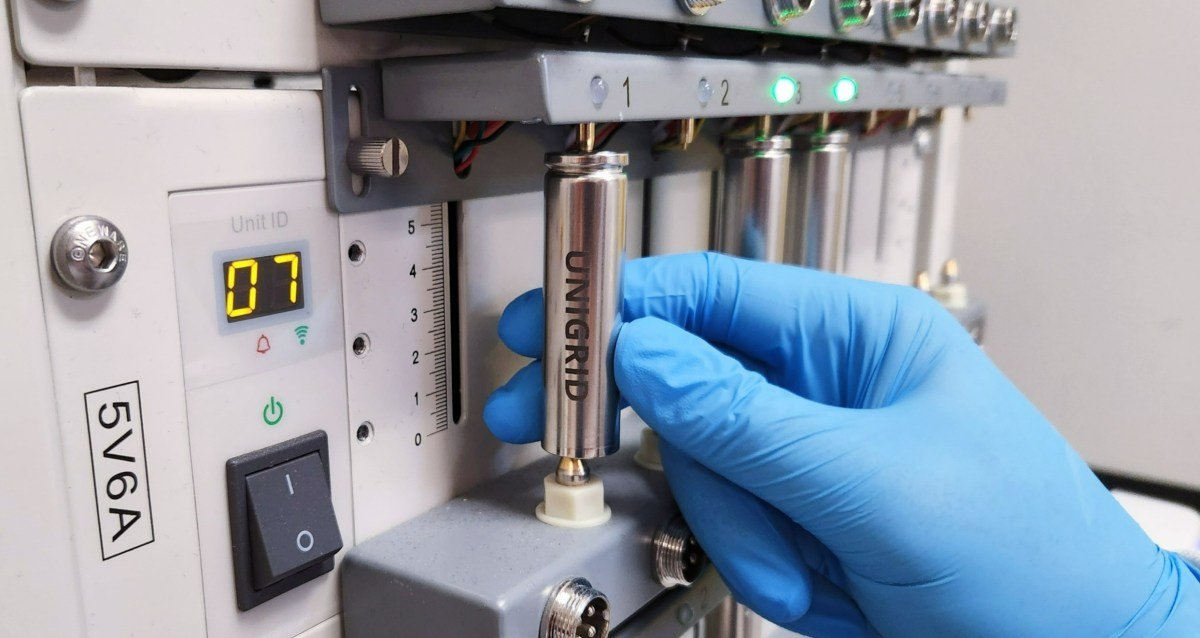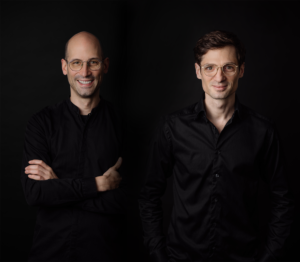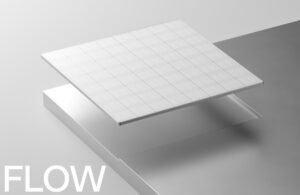If there’s one thing holding batteries back, it’s cost.
The most widespread type of battery, lithium-ion, still costs around $140 per kilowatt-hour for a pack. While that’s low enough to have triggered quickening adoption of electric vehicles, even the cheapest lithium-ion chemistries are still too expensive to put a big battery in every home to protect against blackouts.
Instead, manufacturers have started to explore sodium-ion batteries, not as a replacement, but as a complement to lithium-ion.
“When produced at the same scale, sodium-ion should be about half of where lithium-iron-phosphate is in terms of cost to produce because the raw materials are a hundred times cheaper,” Darren Tan, co-founder and CEO of Unigrid, told TechCrunch.
Despite the promise, sodium-ion isn’t quite ready for widespread use. Batteries made with it are not very dense, making them too large and too heavy for EVs. Plus, many variants behave differently from lithium-ion when they’re charging and discharging, meaning packs made with sodium-ion need new electronics to manage them.
Tan’s startup thinks it has solved those problems by using a new chemistry based on sodium-chromium-oxide in one half of the battery and tin in the other (though Tan emphasizes the company can substitute other materials on either side). Unigrid’s batteries don’t take up any more space than a lithium-iron-phosphate cell, sometimes less. Plus, their power output mimics that of lithium-ion so the company can use the same electronics, and they are made with widely available materials. “Chromium is produced at twice the quantity of copper each year,” Tan said.
The company was borne out of Tan’s research at UC San Diego, where he was a doctoral student under Shirley Meng, a prolific materials scientist who focuses on energy storage. Their goal wasn’t just to create a cheaper battery, but also one that’s safer.
Unigrid’s batteries won’t go into thermal runaway and catch fire until the internal temperature rises to several hundred degrees Celsius, Tan said. “Sodium-ion should not just be like lithium-ion, it should be way safer such that we can put it in buildings, hospitals, data centers, so we can achieve widespread distributed energy storage,” he said.
To deliver that many batteries, Unigrid isn’t going to be building its own factories. Instead, it’ll be working with smaller battery manufacturers that exist simply to make other company’s designs. Think of them like TSMC, which produces computer chips for companies like Apple and Nvidia, albeit much smaller in scale. Unigrid’s chemistry works on their existing equipment, and Tan said there’s enough spare capacity at these facilities to produce batteries on a megawatt-hour scale.
Unigrid’s first market will be energy storage for buildings and small campuses, but it’s also looking to supply manufacturers of so-called light EVs, things like scooters, motorcycles and tuk-tuks. Small vehicles like these are popular in India and Southeast Asia, where the intense heat can make lithium-ion batteries prone to overheating. “There’s a huge opportunity there where the climate is very warm and lots of battery fires occur,” Tan said.
To get its sodium-ion batteries into production, Unigrid has raised a $12 million Series A. The round was led by Transition VC and Ritz Venture Capital with participation from Union Square Ventures and Foothill Ventures.
Tan hopes that Unigrid will be selling cells sooner than later. “We really wanted to do something that could make a more immediate and shorter term impact, something that we could get into the market in the next five years,” he said.









Howdy would you mind stating which blog platform you’re using? I’m going to start my own blog in the near future but I’m having a hard time choosing between BlogEngine/Wordpress/B2evolution and Drupal. The reason I ask is because your design seems different then most blogs and I’m looking for something unique. P.S Apologies for getting off-topic but I had to ask!
Fantastic beat ! I would like to apprentice while you amend your website, how can i subscribe for a blog website? The account helped me a acceptable deal. I had been tiny bit acquainted of this your broadcast offered bright clear concept
Hi, I think your site might be having browser compatibility issues. When I look at your website in Safari, it looks fine but when opening in Internet Explorer, it has some overlapping. I just wanted to give you a quick heads up! Other then that, fantastic blog!
Thanks for some other informative blog. The place else may just I am getting that kind of information written in such an ideal means? I have a venture that I am simply now working on, and I’ve been on the glance out for such information.
Great remarkable issues here. I am very glad to peer your article. Thank you so much and i am looking ahead to touch you. Will you please drop me a mail?
Bwer Company is a top supplier of weighbridge truck scales in Iraq, providing a complete range of solutions for accurate vehicle load measurement. Their services cover every aspect of truck scales, from truck scale installation and maintenance to calibration and repair. Bwer Company offers commercial truck scales, industrial truck scales, and axle weighbridge systems, tailored to meet the demands of heavy-duty applications. Bwer Company’s electronic truck scales and digital truck scales incorporate advanced technology, ensuring precise and reliable measurements. Their heavy-duty truck scales are engineered for rugged environments, making them suitable for industries such as logistics, agriculture, and construction. Whether you’re looking for truck scales for sale, rental, or lease, Bwer Company provides flexible options to match your needs, including truck scale parts, accessories, and software for enhanced performance. As trusted truck scale manufacturers, Bwer Company offers certified truck scale calibration services, ensuring compliance with industry standards. Their services include truck scale inspection, certification, and repair services, supporting the long-term reliability of your truck scale systems. With a team of experts, Bwer Company ensures seamless truck scale installation and maintenance, keeping your operations running smoothly. For more information on truck scale prices, installation costs, or to learn about their range of weighbridge truck scales and other products, visit Bwer Company’s website at bwerpipes.com.
I do not even know how I stopped up here, but I believed this publish used to be great. I do not understand who you are but certainly you are going to a famous blogger in case you aren’t already 😉 Cheers!